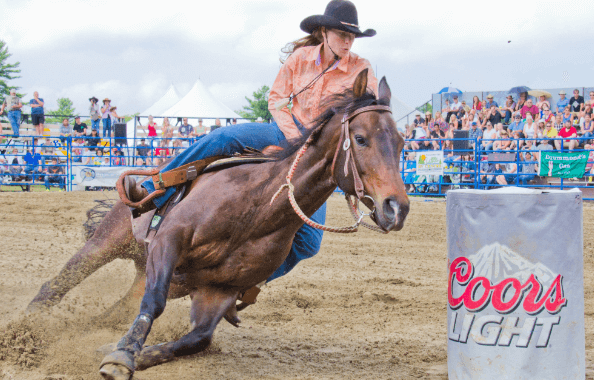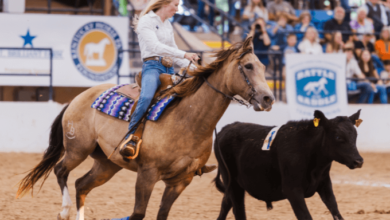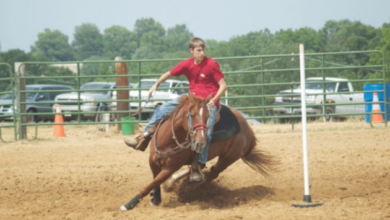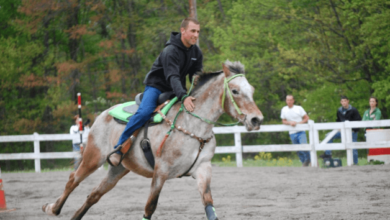How can western pleasure skills be improved?

Western pleasure is a popular and prestigious equestrian discipline that focuses on a horse’s smoothness, responsiveness, and overall demeanor in the show ring. Riders aim to present their horses in a calm, collected manner, with the horse appearing to move effortlessly and naturally. Improving your Western pleasure skills requires dedication to training, attention to detail, and a thorough understanding of what the judges are looking for in competition. In this article, we’ll explore the various strategies you can employ to elevate your Western pleasure performance and bring your skills to the next level.
1. Understanding the Basics of Western Pleasure
Before diving into skill improvement, it’s essential to have a firm grasp of the basics of Western pleasure. This discipline emphasizes a horse’s ability to move at a smooth, controlled pace in walk, jog, and lope gaits. The horse should exhibit a natural and relaxed way of going, with a low head carriage, level topline, and a willingness to respond to the rider’s cues effortlessly. Riders are judged on how well their horse performs and how they manage to showcase the horse’s abilities while maintaining control, precision, and calmness.
The main goals are to present a horse that appears pleasurable to ride, with a consistent rhythm, relaxation, and obedience. Understanding these fundamental expectations is the first step toward improvement.
2. Perfecting Your Seat and Position
Your position in the saddle is critical in Western pleasure, as it influences your horse’s ability to perform correctly. Improving your seat and body posture will make your horse more responsive and comfortable, allowing for smoother transitions and greater control.
- Relaxed and Balanced Seat: Aim to sit deep in the saddle without tension. Keep your weight evenly distributed across both seat bones, allowing your hips to follow the horse’s movement. A tense rider can cause the horse to become stiff, leading to rough gaits and an overall poor performance.
- Leg Position: Your legs should rest naturally against your horse’s sides, with gentle contact. Avoid gripping too tightly with your legs, as this can signal tension to your horse and make its movements less fluid. A relaxed leg helps in giving subtle cues for transitions and maintaining control without disrupting the horse’s flow.
- Hands and Reins: Western pleasure horses are trained to respond to minimal rein pressure, so your hands should be quiet and still. Keep a soft, consistent connection with the reins while maintaining light contact with the horse’s mouth. Sudden or jerky movements can throw off the horse’s balance, leading to a break in rhythm or pace.
3. Mastering the Transitions Between Gaits
Smooth transitions between the walk, jog, and lope are essential for success in Western pleasure. Abrupt or unbalanced transitions can affect your horse’s overall performance and negatively impact your score in a competition.
- Preparation is Key: Before asking for a transition, give your horse time to collect itself. A well-timed half-halt can prepare the horse for the next movement, allowing it to transition smoothly between gaits. Stay calm and collected, ensuring you give your horse clear, consistent cues.
- Use Subtle Cues: The best Western pleasure riders use minimal aids when asking for transitions. Avoid over-cueing your horse with exaggerated leg or rein movements. Practice using your body weight and leg pressure to cue your horse into the next gait. The goal is to make the transition look effortless, as though your horse is reading your mind.
- Work on Consistency: Repetition is crucial when improving transitions. Spend time working on transitioning between gaits until it becomes second nature to both you and your horse. Incorporate upward and downward transitions regularly into your practice to ensure smoothness and consistency.
4. Developing Rhythm and Cadence
A hallmark of a great Western pleasure horse is its ability to maintain a steady, rhythmic cadence in each gait. Rhythm and cadence are key to the relaxed, natural look that judges expect in the show ring.
- Work on the Jog: The jog is one of the most important gaits in Western pleasure, and developing a steady rhythm at this gait is essential. Your horse’s jog should be slow and relaxed but not lazy. Focus on maintaining an even, two-beat rhythm, keeping your horse collected and engaged without losing forward momentum.
- Perfecting the Lope: The lope in Western pleasure is a slow, three-beat gait that must appear smooth and effortless. Practice lope work frequently, ensuring that your horse stays balanced and collected, with minimal rein contact. If your horse is rushing or becoming unbalanced, work on slowing it down and encouraging relaxation through circles and bending exercises.
- Utilize Ground Poles: Ground poles are a fantastic tool for developing rhythm and cadence in your horse’s gaits. Place poles on the ground and practice walking, jogging, and loping over them. This will encourage your horse to focus on maintaining a steady rhythm and help you feel any inconsistencies in your horse’s movement.
5. Improving Your Horse’s Collection
Collection is critical in Western pleasure, as it ensures that your horse moves with balance, lightness, and control. A horse that is well collected can carry itself correctly with a level topline and move with ease through transitions and gaits.
- Engage the Hindquarters: A properly collected horse moves from its hindquarters, carrying more weight on its back end rather than its front end. To improve collection, work on exercises that encourage your horse to engage its hindquarters, such as circles, figure-eights, and transitions between collected and extended gaits.
- Use Half-Halts: Half-halts are subtle checks that remind your horse to balance itself and slow down without coming to a complete halt. This is useful when working on collection, as it encourages the horse to shift its weight back and move more fluidly.
- Lunging for Balance: Lunging your horse with side reins or other collection aids can help it develop the muscles and balance necessary for proper collection. This also allows the horse to practice engaging its hindquarters without the added weight of a rider.
6. Fostering Responsiveness to Leg and Rein Cues
A well-trained Western pleasure horse should respond to the lightest of cues. Improving your horse’s responsiveness will make your performance more seamless and precise.
- Leg Yielding: Teach your horse to move away from leg pressure with exercises like leg yielding, where the horse moves sideways while maintaining forward movement. This helps make your horse more sensitive to your leg cues, which is important for maintaining control and subtlety in the show ring.
- Soft Rein Pressure: Avoid heavy-handed rein use in Western pleasure. Practice riding with loose reins and using gentle pressure to guide your horse. Over time, your horse will become more responsive to lighter cues, which is key for achieving the effortless look that judges desire.
- Desensitization and Focus: Work on desensitizing your horse to distractions in the environment. A horse that is easily distracted may not respond as quickly to your cues, negatively affecting your ride. Incorporating focus drills in your training, such as working in different environments or with other horses, can help improve responsiveness.
7. Mental Focus and Connection with Your Horse
Western pleasure is as much a mental game as it is physical. A strong connection between horse and rider can greatly improve your performance in the ring.
- Stay Relaxed: Horses are incredibly sensitive to their rider’s emotions. If you’re tense, anxious, or frustrated, your horse will likely mirror those feelings. Stay calm and focused during your rides, even when working through difficult exercises.
- Build Trust: Spend time bonding with your horse outside of training sessions. Groundwork exercises, grooming, and simply spending time with your horse can help build trust, which translates to a more harmonious performance in the ring.
- Develop Consistent Communication: Clear, consistent communication is key to success in Western pleasure. Ensure that your cues are always the same so that your horse understands exactly what you’re asking for. Mixed signals can confuse your horse and lead to mistakes in the show ring.
8. Fine-Tuning Your Horse’s Appearance
In Western pleasure, appearance matters. Your horse should be groomed to perfection, and its tack should be clean and well-fitted. But beyond basic grooming, your horse’s natural movement and posture also need attention.
- Encourage a Level Topline: Judges look for a horse that moves with a level topline, meaning its back should remain flat, with its head carried naturally and not too high or too low. Practice exercises that promote a strong, level topline, such as long trotting or extended canter work. Avoid allowing your horse to carry its head too high, which can make its movements look stiff.
- Maintain a Quiet Tail: Horses in Western pleasure should carry their tails calmly and without excessive movement. If your horse tends to swish its tail or become agitated during competition, consider whether something might be bothering it, such as ill-fitting tack or discomfort. Focus on keeping your horse relaxed and comfortable during training to minimize tail swishing.
- Control the Speed: Western pleasure horses are expected to move slowly, but not to the point of losing forward energy. Keep your horse at a pace that is slow enough to meet the discipline’s requirements, yet still energetic enough to demonstrate control and balance.
9. Working with a Qualified Trainer
No matter how experienced you are as a rider, working with a qualified trainer can provide valuable insights and corrections that you might not notice on your own. Trainers can help you refine your technique, improve your horse’s training, and offer advice on how to meet the standards of Western pleasure competition.
- Seek Out Specialized Trainers: A trainer who specializes in Western pleasure will have a deep understanding of the nuances of the discipline and can tailor lessons to focus on the areas that need the most improvement.
- Take Regular Lessons: Consistent lessons will help ensure that you’re on the right track and making progress. Trainers can give you exercises to practice between sessions and can provide feedback on your performance during competitions.
Conclusion
Improving your Western pleasure skills requires dedication, practice, and attention to detail. By focusing on your seat, mastering transitions, developing rhythm and cadence, and fine-tuning your horse’s responsiveness, you’ll be well on your way to excelling in this discipline. Remember that success in Western pleasure isn’t achieved overnight—it’s a continuous journey of learning and growth for both you and your horse. With patience, persistence, and a commitment to improvement, you can achieve excellence in the show ring and enjoy a rewarding experience with your horse.



